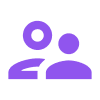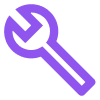In this blog, we explore the significance of a job home and why it is so important within organizations. A job house is like a blueprint that defines the structure and hierarchy of functions and positions within an organization. It provides clarity about responsibilities, competencies and levels, and helps organize and categorize functions. A well-designed job home provides transparency, consistency and growth opportunities for employees. Discover the structure, applications and best practices of a job shop here.
What is a function house?
A job home is a kind of blueprint for an organization. It is a structured system in which all functions and positions within a company are defined and organized. It helps create clarity about who has what responsibilities and how different functions are linked. The job home also makes it easier to establish salary structures and career paths. In short, a job home provides an overview and understanding within an organization so that everyone knows where they stand and how they can grow in their jobs and develop job evaluation as a result.
How is a job board structured?
A job house is composed of several elements that together shape the structure and hierarchy of functions within an organization.The specific construction and layout of a job house can vary between organizations, depending on the needs and complexity of the job structure. The main components of a job home are:
- Job profiles: These are detailed descriptions of individual positions within the organization. They contain information about duties, responsibilities, required skills and competencies.
- Job levels: Job profiles are often grouped into job levels or categories based on the complexity, seniority and responsibilities of the positions. This creates a hierarchy within the job center.
- Job families: Within the job house, jobs can be grouped into job families based on common skills, knowledge areas or disciplines. This facilitates management and comparison of functions within the same subject areas.
- Salary Structure: The job matrix also helps determine the organization’s salary structure. Job levels and job families are often linked to salary bands or scales so that there is consistency and transparency in determining employee salary levels.
The difference between functions and roles
Many organizations have an organized job center and associated job profiles made transparent to employees. What we have increasingly seen in recent years is that organizations are working with role profiles rather than job profiles. Indeed, we see that the two terms are often confused. Yet there is a difference.
- Job Profiles: A job profile focuses on a specific position within an organization. It describes the duties, responsibilities, required skills and competencies needed to perform the job successfully. Job profiles are used in recruitment and selection, performance appraisals, career development and determining salary levels.
- Role profiles: A role profile, on the other hand, has a broader perspective and focuses on an individual’s contribution to a project, team or initiative within the organization. It describes the responsibilities, skills and expected outcomes of a particular role, regardless of the specific job title. Role profiles are more flexible and more focused on contribution to the whole, and they can help assign tasks, divide responsibilities and identify areas of competency within a team.
In short, job profiles focus on specific functions and their requirements, while role profiles focus on a person’s broader contribution to a project, team or initiative, regardless of job title.
Do’s and don’ts in setting up the job center
The creation of the job home is mostly in the HR department. They either do this entirely on their own or enlist the help of a specialized consultant. We at Learned also support organizations with advice on setting up a job home. Thus, we have gathered some do’s and don’ts to consider.
Do’s:
- Inclusive involvement: Involve various stakeholders, such as managers, employees and HR professionals, in creating the job center. This provides a broader perspective and support within the organization, and increases the likelihood of an effective and widely supported job center.
- Regular updates: Keep the job home dynamic through regular review and updates. Functions and responsibilities may change over time, so make sure the job description remains relevant and adapts to the needs of the organization.
- Clear communication: Communicate clearly and transparently about the job center to all employees. Explain how the job center works, how it affects them and the benefits it provides. This promotes understanding, commitment and acceptance of the job center.
Don’ts:
- Excessive complexity: Avoid excessive complexity in the job home. Keep it simple and understandable, so that employees can easily place their function within the structure and understand its relationship to other functions.
- Static character: Don’t be afraid to adjust the job home when necessary. The job house should be flexible enough to accommodate changes in functions and needs of the organization. Strive for a vibrant and evolving job board.
- Focus only on job titles: Make sure the job board is not based solely on job titles. Make sure it also describes duties, responsibilities and required competencies so that employees have a better understanding of what is expected of them, regardless of the title of their position.
Build your job house using AI in Learned
As we just mentioned, your job description consists of more than just job titles. With Learned’s AI-driven career framework, you expand your job titles with relevant job descriptions, skills and competencies. So in no time you will build a job house fully filled to your own industry standards.



























